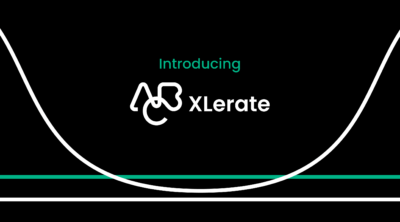If you’re launching a new group fitness business, you need a plan. Your business plan is a blueprint for success and shows how you will run your business. It’s an opportunity to define your idea and concept to find your strengths and weaknesses.
Creating a thorough and highly detailed business plan can help avoid costly mistakes in the future. Turning your dreams into a successful business is hard work. Your business plan will help you obtain funding and organize your thoughts so that you can make decisions based on tangible information. This article discusses why you need a group fitness business plan and eight steps for creating a successful business plan template.
- What Makes a Great Business Plan?
- Why Do You Need a Group Fitness Business Plan?
- 8 Steps for Creating an Effective Group Fitness Business Plan
What is a Group Fitness Business Plan?
If it’s your lifelong ambition to start a group fitness business, the first step you need to take is to create a business plan. Your group fitness business plan describes your business, cements your idea, and makes an effective growth strategy. The plan will also help you identify your financial projection and attract potential investors if necessary.
It’s important to be realistic with your business plan and set future goals that you can achieve and implement. When starting a new group fitness business, it’s no secret that the fitness landscape is competitive. But every year, group fitness continues to dominate the fitness industry, coming out on top in the industry.
While the concept of group fitness continues to evolve and digital fitness comes into play, the demand for group fitness remains strong. It may take a while for group fitness classes to resume full capacity, but running your business as a hybrid model should be a significant consideration when starting a new fitness business. There is a big opportunity in the fitness industry to take advantage of group fitness and find your niche. An effective business strategy starts with a group fitness business plan.
Why Do You Need a Group Fitness Business Plan?
A business plan is essential for those starting a business and crucial for already established businesses. While you would look to create the business plan document in your business’s early stages, your business plan evolves with your company. As you grow, you can reassess your plan and make changes to accomplish your new objectives. Here are three reasons why you need a group fitness business plan.
Secure Financial Investment
The majority of new startup businesses need capital to get off the ground and running. If you don’t have a thorough and detailed business plan, it would be almost impossible to secure financial investment. No one will invest in your business without a financial forecast and a solid idea that you can succeed. Depending on your type of business, you may need to buy group fitness equipment, rent a location or fitness studio, and invest in software and hardware to stream your classes digitally. An up-to-date business plan gives you the best chance of securing funding.
Identify Strengths and Weaknesses
Another key reason behind developing your business plan is to determine your strengths and weaknesses. This will help you to assess risk and overcome future challenges as well as play to your strengths. By carrying out a thorough market analysis of your niche and competition, you can figure out what sets you apart from your competition. Your strengths and your unique selling point (USP) will become more clear.
Define Your Idea and Concept
If you’re starting a group fitness business, you probably have a passion for fitness. Maybe you’ve spotted a gap in the market, and you’ve decided to turn your passion into your next business venture. Your business plan will help you define your business idea and concept even further to showcase your value and create an effective strategy. Your growth strategy will begin with your business plan, and you will make several decisions based on this information and research.
What Makes a Great Business Plan?
A great business plan takes time to develop. It’s not a document that you can pull together in an hour. As the plan has multiple aspects, it takes a ton of research and information to create. The most successful business plans are highly detailed. They include all the information you need for a good starting point. It contains industry knowledge, your marketing plan, target audience demographics and interests, value proposition, and operating procedures.
Your business plan should be as specific as possible as you will communicate it to all your employees. You need to commit to the plan and be able to share it with your employees. It needs to be organized, compelling, and concise. If an outside person were to read your business plan, it should be clear that you know your market and know your service. There should be no doubt of what you’re trying to achieve and how you plan on doing it.
The Top 10 Barriers
Slowing Your Fitness
Business Growth
Discover more You must keep your business plan alive after completion. A great business plan is up-to-date and changes with the business. If you have pivoted from running an in-person HIIT class to a mixture of digital and in-person classes, your business has evolved. Your business plan should reflect these changes and remain relevant. In times of need, you should be able to refer to your business plan for guidance and evaluate your business’s inner workings.
8 Steps for Creating an Effective Group Fitness Business Plan
When creating an effective group fitness business plan, it’s helpful to go through a certain order. Generally, most business plan templates follow a similar path from start to finish. When launching a business, you have so much to think about, but a concise and detailed gym business plan should be at the top of your to-do list. Here is a step-by-step guide for creating your business plan.
1. Outline Your Executive Summary
Your executive summary goes near the beginning of your business plan. It’s a summary of your report and should be super concise and to the point. When reading a business plan, a person should read your executive summary and get an optimistic overview of what’s in the report and why they should be interested. The idea is to capture attention so that it encourages a person to find out more. Although the executive summary is at the beginning of your plan, many people find it easier to circle back and write it at the end. This part should be no longer than two pages and give a quick overview of all the sections in your business plan.
2. Write Your Company Overview
As you write your business plan, you will demonstrate your why. Why are you starting a business? Be honest with yourself and make sure that you’re starting a group fitness business for the right reasons. Identify your group fitness niche and define your concept. Group fitness niches include cycling, Pilates, aerobics, dance, and kickboxing. Your company overview consists of a few different sections that come together, including:
- Location and facilities: Details on where your business will be, both digital and in-person, or your plans to acquire fitness space.
- Mission statement: A brief statement on the principles of your business.
- Legal structure: How your business is structured and who owns it.
- Company history: Some background on who founded the business and when.
- Management: The roles and management operations involved.
3. Define Management Structure
What’s your plan for your workforce? You need a team of employees that can run fitness classes, record new video content, and market your services. Even if you plan on starting your business alone, the likelihood is you will plan on hiring employees in the future. When planning your management structure and staffing, you will need to consider the type of qualifications you’re looking for. If you’re launching a specific group fitness training business, it’s a good idea to align your employees to your business. Other things to think about include the type of employment, such as hourly, freelance, or contracted staff.
4. Industry and Market Analysis
To have a clear understanding of where your business stands in comparison to your competition and the wider industry, you need to do a complete analysis and market research. You want to figure out how your target audience benefits and demonstrate this within the business plan; you need to calculate the market’s interest. How will you stand out from the competition and drive value to your client base? All this research will help you further down the line when outlining your target audience and your marketing and sales strategy.
5. Consider Your Marketing Strategy
How will you let your community know about your business venture? You need to spread the word to new clients to know you are open for business and help them solve a problem in their lives. Although your marketing strategy will evolve, your business plan includes your initial marketing plans. This could include social media marketing, paid ads, content marketing, and more traditional advertising methods. The best strategy depends on your type of business, your target audience, and where your customers are most likely to hang out. If you find that your target audience are big social media users, it makes sense that social media will be a significant part of your ongoing marketing strategy.
6. Describe Your Offerings
Describe your offerings and outline your value proposition. This section of your business plan demonstrates what services and products you offer. Your value proposition is a short summary of what your business offers. It’s the essence of your business and should show why a customer should sign up for a membership with you or invest in a product. This part of your plan should make the concept of your business crystal clear. It should be compelling and concise and describe the benefits to your target audience. Identify your customer’s pain point and show how your solution solves their problem and adds value.
7. Determine Your Financial Projections
An essential part of your business plan revolves around your finances and cash flow. This is a key area that potential investors will look at when deciding whether to fund your new venture. A realistic financial plan is crucial to your business plan. Think about what you need to get up and running, your ongoing costs, and your financial projections. You will have expenses that you will need to cover before you start turning a profit; how will you fund these? It’s a good idea to consult experts so that you can have a solid financial plan in place in the early days. Things like location, equipment, software, staffing, insurance, and legal fees all rack up quickly.
8. Consider Your Business and Pricing Model
There are different ways to run a wellness and fitness business. Many fitness businesses run as membership-based businesses with monthly memberships. At the same time, others operate as with a pay-as-you-go system. You can also have both in-person and digital classes if you want to run a hybrid group fitness business. As a group training business, you can offer clients membership options, offer semi-private personal training programs, or sell your services in blocks or weeks. Your business plan should include how you plan on operating, your pricing strategy, and your business model.
In Summary
Starting any business is brave and requires a ton of hard work. Creating a group fitness business plan can build a solid foundation for growth based on accurate data. If you’re looking to attract investment to get off the ground, a business plan is non-negotiable. A valuable business plan understands your target market, USP, forecasts your finances, and hashes out a lot of details about your business going forward.















